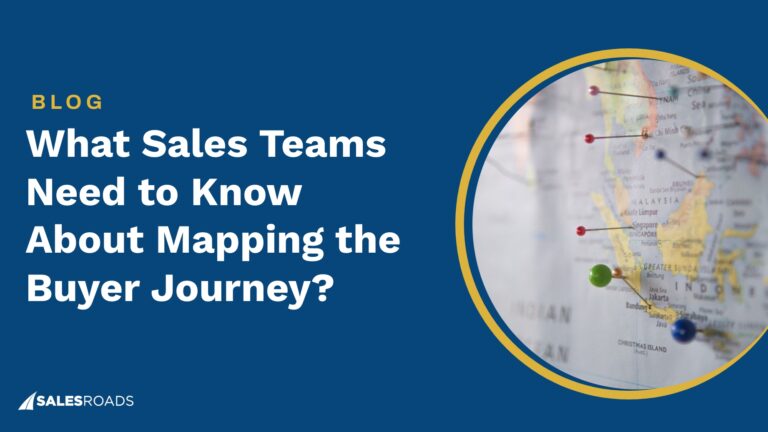Accurate and up-to-date data is the lifeblood of sales since it’s the foundation upon which your sales efforts are built. Ensuring the quality of this data, a process known as data hygiene, is crucial for reaching the right decision-makers.
What Is Data Hygiene?
Data hygiene involves maintaining the accuracy, completeness, and consistency of your prospect data. This includes identifying and correcting errors, removing duplicates, and standardizing data formats. By investing in data hygiene, you’re laying the groundwork for a more efficient and effective sales process.
Basic Principles of Data Hygiene
Data hygiene is more than just cleaning up your data; it’s about establishing a foundation for accurate, reliable, and actionable information.
The following principles are essential for maintaining a healthy data ecosystem:
Data Accuracy
Ensuring data accuracy is paramount. Every piece of information, from names and addresses to contact details and preferences, should be verified and corrected as needed. Inaccurate data can lead to a cascade of problems, including:
- Missed opportunities: Targeting the wrong individuals can result in lost sales and business relationships.
- Damaged reputation: Inaccurate information can erode trust and credibility.
- Increased costs: Errors in data can lead to costly mistakes and rework.
For example, if a company’s marketing team sends promotional materials to an outdated address, the effort and resources spent are wasted.
Data Completeness
A complete dataset is essential for effective analysis and decision-making. Missing data can hinder your ability to gain insights and draw accurate conclusions. For instance, if a customer survey is missing key demographic information, it becomes difficult to understand the preferences and needs of different segments.
Imagine a customer survey that asks about product preferences but lacks information on income levels. Without this data, it’s impossible to determine whether pricing strategies are aligned with customer purchasing power.
Data Consistency
Data consistency ensures that information is presented in a uniform and standardized format. Inconsistent data can lead to confusion, errors, and difficulty in analyzing trends. For example, if customer addresses are stored in different formats (e.g., street address, ZIP code), it can be challenging to merge and analyze this data.
Consider a sales team that uses multiple CRM systems. If the data in these systems isn’t consistent (e.g., different date formats, varying contact information), it becomes difficult to get a unified view of customer interactions and sales performance.
Data Timeliness
Outdated data can provide a distorted view of the current situation. It’s crucial to regularly update your data to ensure it reflects the latest changes. For instance, if sales reps continue to call a decision-maker who has changed jobs, their efforts are wasted.
Imagine a marketing campaign targeting a specific geographic region. If the company’s demographic data is outdated, they may be missing out on new residents who would be ideal customers.
Why You Need Data Hygiene?
Neglecting data hygiene in B2B sales can have severe consequences:
Wasted Time and Resources
When sales teams focus on bad data, they spend time and resources on prospects that aren’t going to convert into customers. This means your sales team is wasting their time and your company’s resources.
- Instead of inefficient outreach, prioritize data accuracy to ensure your sales efforts are targeted and effective.
- Avoid reduced productivity by investing in data completeness and consistency, enabling sales reps to work efficiently.
- Minimize increased costs by maintaining data timeliness, preventing outdated information from leading to wasted efforts.
Damaged Relationships
Inaccurate or outdated data can lead to frustrated prospects and damage your company’s reputation.
- Prevent frustrated prospects by ensuring data accuracy and completeness, building trust and credibility.
- Protect your reputation by prioritizing data hygiene, and demonstrating your commitment to customer satisfaction.
Missed Opportunities
By focusing on the wrong prospects, you may be missing out on valuable opportunities.
- Avoid bypassing qualified leads by investing in data quality, enabling you to identify and target high-value prospects.
- Gain a competitive advantage by leveraging clean data to make informed decisions and outmaneuver competitors.
Negative Impact on the Bottom Line
A lack of qualified leads directly impacts your revenue by reducing the number of sales opportunities. When your sales team is spending time on unqualified leads, they’re not able to focus on prospects that are likely to convert.
This can lead to missed sales, decreased revenue, and a negative impact on your bottom line.
- Increase revenue by improving lead targeting and conversion rates through accurate data.
- Protect your brand by prioritizing data hygiene and maintaining a positive reputation.
Common Data Hygiene Issues
Even with the best intentions, common issues can arise that can negatively impact your data quality. Let’s explore some of the most frequent challenges and how to address them.
Duplicate Records
Duplicate records are a common data hygiene problem that can significantly impact data analysis. When the same data point exists multiple times in a dataset, it can lead to inaccurate results and skewed conclusions.
To identify and eliminate duplicate records, consider using data cleaning tools or writing custom scripts. These tools can help you compare records based on key fields, such as name, email address, or customer ID. By removing duplicates, you can ensure that your data is accurate and consistent.
Inaccurate or Outdated Data
Inaccurate or outdated data can render your analysis useless. Common sources of such errors include:
- Manual data entry: Human error is a significant contributor to data inaccuracy.
- Data integration: Merging data from multiple sources can introduce inconsistencies.
- Data decay: Over time, data can become outdated, especially in rapidly changing industries.
Recent findings from Marketing Sherpas show that B2B data decays at a rate of 2.1% per month, which adds up to 22.5% over the year. So data decay is the biggest reason why your data gets outdated.

To prevent and address these issues, implement data validation rules, regularly update your data, and use data quality tools to identify and correct errors.
Missing Data
Missing data can hinder your ability to draw meaningful conclusions from your analysis. When data fields are incomplete, it can lead to biased results and inaccurate predictions.
To complete missing data fields, you can:
- Impute values: Use statistical methods to estimate missing values based on existing data.
- Contact data sources: Reach out to the original data providers to obtain missing information.
- Delete records: If the missing data is too extensive or cannot be reliably imputed, consider deleting the affected records.
By addressing missing data, you can ensure the completeness and reliability of your dataset.
Other Data Quality Issues
Beyond duplicates, inaccuracies, and missing data, other common data quality issues include:
- Inconsistent formatting: Data that is not formatted consistently can make it difficult to analyze and compare.
- Data entry errors: Typos, incorrect values, and other data entry mistakes can introduce inaccuracies.
To address these problems, implement data standardization rules, use data validation tools, and train data entry personnel on proper procedures. By maintaining high data quality standards, you can ensure the accuracy and reliability of your data.
Steps to Achieve and Maintain Good Data Hygiene
Data hygiene is an ongoing process that requires consistent attention. By following these key steps, you can establish and maintain a high level of data quality.
Before moving on with the steps, hear David Kreiger talk with Mario. M. Martinez Jr. in the Modern Selling Podcast about how bad data sinks great salespeople:
Data Governance
Data governance provides a framework for managing data quality, security, and compliance. By establishing clear policies and procedures, businesses can ensure that data is collected, stored, and used in a consistent and responsible manner.
A robust data governance framework includes:
- Data ownership: Assigning responsibility for data quality to specific individuals or teams.
- Data quality standards: Defining standards for data accuracy, completeness, consistency, and timeliness.
- Data security measures: Implementing measures to protect data from unauthorized access and breaches.
- Compliance regulations: Ensuring adherence to relevant data privacy and security regulations.
Data Cleansing
Data cleansing involves identifying and correcting errors, inconsistencies, and duplicates within your dataset. This process is essential for ensuring data accuracy and reliability.
Effective data cleansing techniques include:
- Data profiling: Analyzing data to identify anomalies, inconsistencies, and missing values.
- Duplicate detection: Identifying and removing duplicate records.
- Data standardization: Ensuring that data is formatted consistently across different sources.
- Error correction: Correcting inaccurate or incorrect data.
Data Validation
Data validation is the process of ensuring that data meets predefined rules and standards. By implementing data validation rules, businesses can prevent errors from entering their systems and maintain data quality.
Common data validation techniques include:
- Range checking: Ensuring that data values fall within a specified range.
- Format checking: Verifying that data is in the correct format (e.g., date, number, text).
- Consistency checking: Ensuring that data is consistent across different fields or records.
- Reference checking: Verifying that data values exist in reference tables or lists.
Data Enrichment
Data enrichment involves adding additional information to your dataset to enhance its value and provide deeper insights. Common data enrichment techniques include:
- Geocoding: Adding geographic information (e.g., latitude, longitude) to data.
- Demographic enrichment: Adding demographic information (e.g., age, gender, income) to data.
- Firmographic enrichment: Adding information about companies (e.g., industry, size, revenue) to data.
- Social media enrichment: Adding social media data (e.g., followers, engagement) to data.
Tools and Technologies for Data Hygiene
Let’s explore some of the essential tools and technologies that can help you maintain a clean and accurate dataset.
Data Quality Tools
Data quality tools are designed to identify, correct, and prevent data errors. These tools can automate tasks such as:
- Data profiling: Analyzing data to identify inconsistencies, duplicates, and missing values.
- Data cleansing: Correcting errors, standardizing data, and resolving inconsistencies.
- Data validation: Ensuring that data adheres to predefined rules and standards.
Popular data quality tools include Talend, Informatica, and Trillium.
Data Integration Tools
In today’s data-driven world, businesses often rely on data from multiple sources. Data integration tools help consolidate data from various systems into a single, unified view. These tools can:
- Extract data: Extract data from different sources, such as databases, files, and APIs.
- Transform data: Convert data into a consistent format and structure.
- Load data: Load the transformed data into a target system or data warehouse.
Examples of data integration tools include Informatica PowerCenter, Talend Open Studio, and Stitch.
Data Governance Platforms
Data governance platforms provide a framework for managing data quality, security, and compliance. These platforms can:
- Define data policies: Establish rules and guidelines for data usage, access, and quality.
- Monitor data quality: Track data quality metrics and identify issues.
- Enforce data standards: Ensure that data is collected, stored, and used consistently.
Popular data governance platforms include Collibra, Erwin, and IBM Information Governance.
By leveraging these tools and technologies, businesses can establish a strong data hygiene foundation and ensure the accuracy, reliability, and integrity of their data.
Bottom Line
Without a solid foundation of clean, accurate, and consistent data, your sales and marketing efforts are doomed to fail.
To ensure your business is built on a solid foundation of data hygiene, it’s essential to implement data hygiene best practices and deploy the best tools.
If you lack the expertise to implement effective data hygiene practices, consider partnering with third-party vendors. These experts can help you build high-quality prospect lists, clean and enrich existing data, and implement data governance frameworks.










